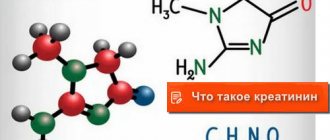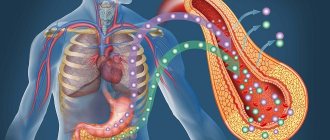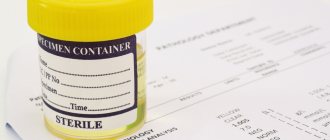Standard “Urine collection for general clinical analysis”
Using a general clinical urine test, I diagnose a wide range of diseases. First of all, this study is used to identify diseases of the genitourinary system of the human body. The analysis is indicative even in the early stages, when there are no other symptoms.
The main purpose of such an analysis is diagnostic. The physical properties of urine, its chemical composition and sediment microscopy are assessed. Indications for use
- general examination of the patient, including as part of medical examination;
- examination of people at risk of developing diseases of the genitourinary system;
- examination of people who have chronic diseases of the genitourinary system, including those in remission.
Correct collection of biological fluid for examination is the key to the reliability of research results. The algorithm here is quite simple.
- Basic hygiene procedures are washing from front to back immediately before collecting biological fluid. This is necessary to prevent the entry of microflora from tissues adjacent to the urinary tract.
- Dumping the first portion of urine into the toilet - urination begins “as usual”, but is interrupted at the count of 1-2.
- Collection of biological fluid - a special container is placed at the urinary opening, into which 100-200 ml of urine is released. Urination is interrupted.
- Continued urination. Completing mictio in the usual manner into the toilet.
It is worth considering that collected urine can be stored in the refrigerator for no more than 90 minutes at a temperature of +4 – +8 C.
It is believed that women do not have urine tested during their period. In fact, sampling of material is permissible provided that a catheter is used.
Normal urine pH
In children and adults, the normal urine acidity level is considered to be in the range of 5-7. When the urine reaction is constantly acidic (pH<5) or alkaline (pH>6) in the absence of obvious reasons for this, a diagnostic search is necessary. Determination of urine pH involves a clinical analysis.
A shift in urine pH to one side promotes the formation of different salts in the sediment:
- if the indicator is below 5.5, urate stones are formed;
- with a reading from 5.5 to 6.0 – oxalate stones;
- if the pH is above 7.0, phosphate stones form.
These indicators are taken into account for urolithiasis.
Standard “Urine collection using the Nechiporenko method”
Using a urine test using the Nechiporenko method, numerous diseases of the genitourinary system are detected. Most often it is prescribed for the diagnosis of cystitis, pyelonephritis, as well as inflammatory processes of the urinary tract. This method is also used to confirm the effectiveness of treatment, especially when using antibiotic therapy. Also, the Nechiporenko test is prescribed for a “bad” general clinical urine test.
The main purpose of the Nechiporenko analysis is diagnostic. With its help, a quantitative indicator of the cellular elements of urine is determined. These are erythrocytes, leukocytes, cylinders. The main indication for use is pathological processes in the kidneys, bladder, and urinary tract. Such an analysis is prescribed by a doctor (general practitioner, urologist, nephrologist, and less often by an andrologist and gynecologist) only if there are objective indications.
To correctly collect material, it is necessary to follow a certain algorithm of actions, which is similar to collecting urine for a general clinical examination.
- Washing to ensure cleanliness and minimize the entry of foreign microflora and other particles into the biological fluid.
- Discharging the first portion of urine into the toilet. This is the part that is released during the first 1-2 seconds from the start of urination. After dumping the first portion, you need to interrupt urination.
- Collection of material. The “middle” part of the stream portion is collected in a special container for collecting urine (can be purchased at a pharmacy). At least 50 ml of material will be required.
- Continue and complete urination into the toilet.
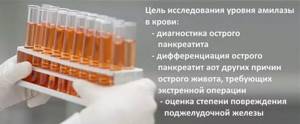
General urine analysis (deciphering parameters)
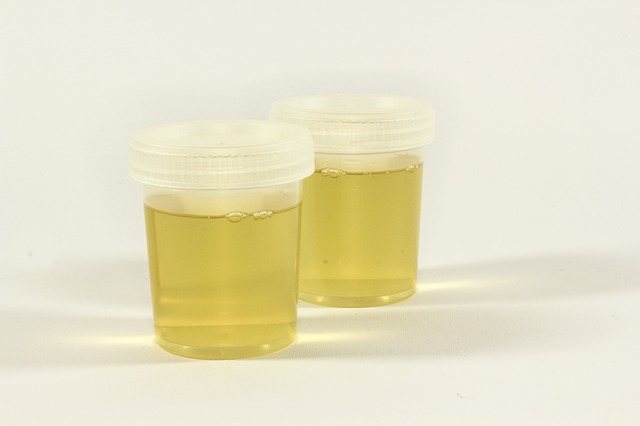
10.26.2017DiamedUSEFUL ARTICLES
General urine analysis deciphering parameters: norm and pathology:
1. Urine color.
The ideal color of urine is from straw to amber yellow.
The saturation of the yellow color of urine depends on the concentration of substances that are dissolved in it. Its color may change when taking medications and even when eating certain foods. If the urine is cloudy, this indicates the presence of impurities of salts (urates, phosphates, calcium oxalates), bacteria, red blood cells, which may indicate inflammatory kidney diseases. Colorless urine can occur when drinking too much, as well as when the concentrating ability of the kidneys is impaired and in case of renal failure. Urine may be pink after eating more beets, or phenolphthalein, or sulfa drugs.
2. Acidity.
Urine pH depends on the child's nutrition. With a mixed diet, acidic metabolic products are mainly formed, so it is believed that the urine reaction is normally acidic. An alkaline reaction of urine indicates a chronic urinary tract infection, which occurs with diarrhea and vomiting. An increase in urine acidity is observed in feverish conditions, renal failure, diabetes mellitus, tuberculosis of the kidneys or bladder.
3. Specific gravity.
This indicator characterizes the filtering function of the kidneys, and the specific density depends on the amount of excreted organic compounds (urea, salts, uric acid), chlorine, potassium, sodium, as well as the amount of urine excreted. If the kidneys are functioning normally, the following indicators are characteristic: in a healthy adult with a normal water load, the specific gravity of the morning urine portion is usually 1.015 - 1.020; in children this figure is 1.003 - 1.025 (in newborn children - up to 1.018, from the 5th day of a baby’s life to 2 years old 1.002 - 1.004, and in 2 - 3 years old - 1.010 - 1.017, in a child aged 4 - 5 years 1.012 - 1.020, and from 10 years – 1.011 – 1.025).
4. Protein.
The presence and increase of protein in the urine (proteinuria) may indicate an infection. Further examination of the child will be required.
5. Glucose
Normally, glucose is absent in a general urine test or the content is no more than 0.2%.
6. Leukocytes.
Normally, they can be in the urine in the following quantities: in boys - up to 5 in the field of view of the microscope, and in girls - up to 7 in the field of view of the microscope. If the number of leukocytes increases (leukocyturia, pyuria), then in combination with bacteriuria and necessarily in the presence of any other symptoms (for example, increased body temperature, frequent painful urination, or pain in the lumbar region) indicates infectious inflammation of the kidneys or urinary tract .
7. Red blood cells and bacteria. Normally, red blood cells in the urine can be present in quantities of up to 3-4 in the field of view. But bacteria are normally absent in a general urine test. The presence of bacteria indicates chronic or acute diseases of the kidneys or urinary tract.
8. Epithelium.
Epithelium refers to the cells that cover the urinary tract - they can be present in small quantities (1-2 in the field of view), with a large amount of epithelium we can talk about an inflammatory process in the organs of the urinary system, and in girls, in addition, the vulva and vagina.
9. Hyaline cylinders.
Normally, they are absent in a general urinalysis. Cylindruria is a symptom of kidney damage, so it is usually accompanied by the presence of protein and renal epithelium in the urine.
10. Slime.
Normally, there is no mucus in the child’s urine or there is only a small amount. A large amount of mucus may indicate an inflammatory process.
11. Salts. It should not be present at all or in very small quantities.
The best person to comment on the result and answer all your questions is your pediatrician.
Referral for a urine test: a doctor’s whim or an effective study
Sooner or later, every person is faced with the need to undergo certain tests. For the first time this happens in the maternity hospital. In later life, we undergo various tests if necessary. What can these manipulations give, how informative are they, and why are they even prescribed? And what does the encryption of a general urine test hide?
Medicine as a science has existed for a very long time. It does not stand still and is constantly evolving. Modern laboratories are able to provide a detailed answer about the patient’s health status from a small amount of biomaterial. There are quite a few types of tests, but the most common is a general urine test. We encounter it most often throughout our lives.
Preparation, collection and storage rules
Like any other diagnostic examination, OAM requires certain preparation. After all, the composition of the material is influenced by many factors - both external and internal. This can be physical activity, stressful situations, various pharmaceuticals and, of course, dietary habits. To obtain correct results, strict adherence to the instructions is necessary. It is important to collect the liquid correctly:
- preparing a clean, sterile container with a tight lid - they are now sold in every pharmacy;
- the procedure is carried out in the morning, since the “night” liquid is the most informative;
- per day you cannot take medications, dietary supplements, vitamins, alcoholic beverages and products that can change the color of the biomaterial;
- fluid collection occurs on an empty stomach before eating or drinking any drinks;
- you should not overcool or overheat, so the day before the collection you should avoid going to the bathhouse, sauna or contrast shower;
- You cannot take the test during menstruation or at the stage of exacerbation of an infectious disease;
- you should wait 5–7 days if a cystoscopy was performed the day before.
Compliance with the above recommendations will allow you to get an accurate picture of the state of the body and make the right conclusion for your doctor. But how to take a general urine test? An important point remains the sterility of the container and the absence of foreign inclusions.
How to prepare? There are rules for this:
- it is necessary to take a morning shower, otherwise an increased level of red and white blood cells is very likely;
- collect an “intermediate portion” of morning urine into a clean container;
- the container should not come into contact with the skin;
- after the procedure, the container should be tightly closed with a lid;
- The shelf life of urine is no more than two hours from the moment of collection in a cool place;
- For small children, sterile urine bags are used.
Patients often have a question: how much urine is needed for a general analysis? The required volume of liquid is about 100–150 ml. This amount is quite sufficient to conduct a full diagnostic study.
Chemical properties
When urine is delivered, it is first checked for reaction. For this purpose, universal indicators are used. Paper strips change color. To obtain the result, they are compared with a colorimetric scale.
In a normal adult diet, the reaction should be neutral. Alkaline symptoms occur in vegetarians or when taking certain medications. A bad sign is an acidic reaction. This indicates serious health problems: diabetes, urolithiasis and kidney dysfunction.
The chemical properties of urine include a number of other indicators. One of them is the density of the analyzed liquid. This indicator depends not only on the state of health, but also on the age of the patient. An important indicator that affects the density of urine is the amount of elements dissolved in it.
The progression of some diseases also causes changes in the chemical composition. A general urine test during pregnancy with an increased density of the test material indicates severe toxicosis in the patient. This condition requires immediate consultation with a gynecologist and constant monitoring by medical staff.
When conducting laboratory tests, special attention is paid to the biochemical composition of the analysis:
- protein ideally does not exceed 0.033 g/l, otherwise this may indicate dangerous diseases of the genitourinary system, heart problems, etc.;
- sugar should be no more than 0.8 mmol/l; deviations indicate possible diabetes, kidney or adrenal gland dysfunction, Cushing's syndrome. Often this indicator is increased due to a passion for sweets or during active physical activity. loads;
- bilirubin should be absent; its appearance signals the concentration of this indicator in the blood. This is a reason for a serious examination and urgent consultation with the attending physician;
- There should also be no acetone in the urine. The manifestation of ketone bodies in a urine test can be a consequence of diseases or a number of external factors: fasting, alcohol poisoning, abuse of fatty foods. A healthy lifestyle and proper nutrition can eliminate this problem.
It is worth noting that these indicators can deviate significantly from the norm during pregnancy, especially if the woman is accompanied by severe toxicosis. Therefore, there is no need to panic, you just need to consult a doctor. Perhaps he will prescribe nutritional adjustments or some dietary supplements. In some cases, hospital treatment is required.
How to prepare for diagnosis
The morning urine sample is used for the study. It is necessary to thoroughly clean the external genitalia, as this makes the diagnosis more accurate. Urine is not collected during menstruation. The day before, it is necessary to limit the consumption of vegetables and fruits that have bright colors. In the evening you should not eat spicy marinades, sauces, smoked meats, or honey. Also, it is worth limiting the use of certain medications. Please consult your doctor about this in advance. Before collecting urine, it is advisable to avoid strenuous physical activity. Limit your consumption of alcohol, strong tea, and coffee.
Purpose and conduct of the study
Ph urine analysis is prescribed for endocrine pathology, kidney disease, and diuretic therapy. For laboratory testing, fresh urine is required, which is no more than two hours old. Before the analysis, you do not need to consume foods that increase or can decrease the acidity of urine. You should not take diuretics that increase the removal of water from the body and affect the chemical composition of urine.
The price of the study depends on the chosen institution. The INVITRO laboratory guarantees a high-quality analysis, since we have experienced employees and modern equipment, while its cost is quite reasonable.
Physical properties
Like any liquid, urine has its own physical properties, which also indicate the patient’s health status:
- Volume . Normally, it is up to 300 ml, regardless of gender and weight category. If this figure is below 100 ml, this indicates severe dehydration. Exceeding the norm indicates inflammatory processes.
- Color. The slightest changes in this factor are very eloquent. Normally, urine should be light yellow in color, otherwise it indicates a number of diseases. An orange-red tint indicates hepatitis or cirrhosis. A slightly reddish color also indicates critical malfunctions in the body. This can be either ordinary pyelonephritis, tuberculosis or kidney cancer. Black urine indicates alkaptonuria. If the collection gives a gray-white result, then this is a sign of purulent processes. Some medications produce OAM in a bright yellow color. That is why you should avoid them at least a day before the procedure.
- Smell . Sharp changes in aroma are characteristic of a number of diseases. For example, the smell of acetone indicates diabetes.
- Foaminess . The presence of foam during shaking indicates many deviations. This can be either stress or metabolic disorders in the body, or diabetes or cardiovascular diseases.
- Purity and transparency. Cloudy urine indicates excess salt in the human body. This may also be an indicator of mucous and purulent discharge, increased levels of red blood cells and the presence of various bacteria. Infectious diseases can also cause urine to become cloudy.
It should be remembered that the normal physical properties of urine do not indicate the complete health of the body, so you cannot rely only on these indicators. Detailed laboratory examination of the material is necessary for a complete picture and accurate results.
Research results
What does a general urine test show? The doctor’s conclusion about the patient’s health status is based not only on the identified physical and chemical properties of urine. There are a number of other important indicators that give a clear picture of the overall picture of ongoing processes in the body:
- hyaline, granular and waxy casts;
- bacteria;
- mushrooms;
- salt.
Any deviations from the norm of these indicators indicate various problems in the patient’s body.


